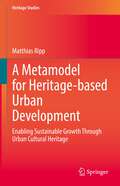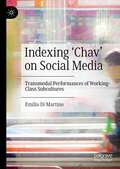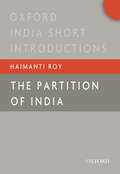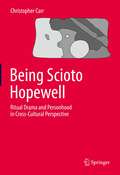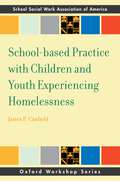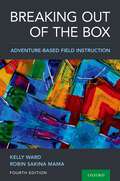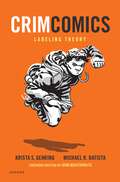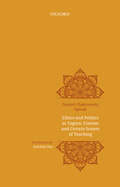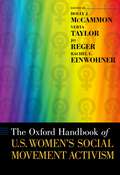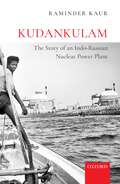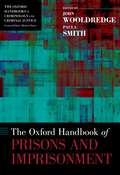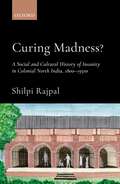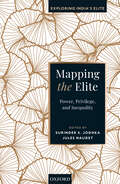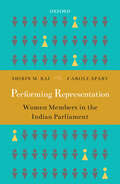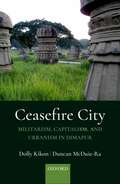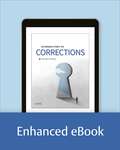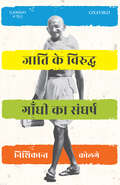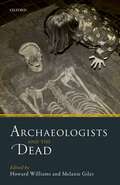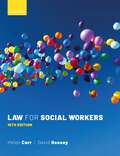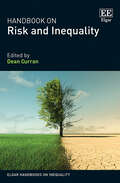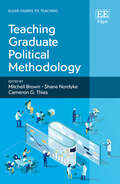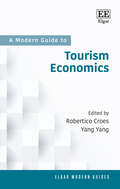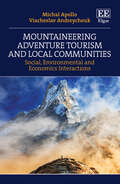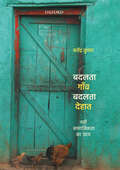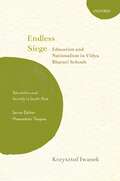- Table View
- List View
A Metamodel for Heritage-based Urban Development: Enabling Sustainable Growth Through Urban Cultural Heritage (Heritage Studies)
by Matthias RippThis book proposes a Metamodel for heritage-based urban development, based on urban morphology, governance theory, and the metamodeling concept of John P. Van Gigch. Building on international policies such as the 2011 Recommendation for Historic Urban Landscapes and the results of the 2016 Urban Habitat III Conference, cultural heritage is now regarded as a potential resource for sustainable urban development. While more and more evidence of the potential benefits of cultural heritage for sustainable development has been published, this book is the first to develop and design a Metamodel that can be universally applied in a wide variety of settings. The Metamodel was developed using grounded theory and design research methodology and is based on three successful case-models from European contexts. The book includes three application scenarios that elaborate how the metamodel can be used to design, evaluate, and improve processes where cultural heritage is a starting point for sustainable urban development.
Indexing ‘Chav’ on Social Media: Transmodal Performances of Working-Class Subcultures
by Emilia Di MartinoThe book sets out to examine the concept of 'chav', providing a review of its origins, its characterological figures, the process of enregisterment whereby it has come to be recognized in public discourse, and the traits associated with it in traditional media representations. The author then discusses the 'chav' label in light of recent re-appropriations in social network activity (particularly through the video-sharing app TikTok) and subsequent commentary in the public sphere. She traces the evolution of the term from its use during the first decade of the twenty-first century to make sense of class, status and cultural capital, to its resurgence and the ways in which it is still associated with appearance in gendered and classed ways. She then draws on recent developments in linguistic anthropology and embodied sociocultural linguistics to argue that social media users draw on communicative resources to perform identities that are both situated in specific contexts of discourse and dynamically changing, challenging the idea that geo-sociocultural varieties and mannerisms are the sole way of indexing membership of a community. This volume contends that equating 'chav' with 'underclass' in the most recent uses of the concept on social networks may not be the whole story, and the book will be of interest to sociocultural linguistics and identity researchers, as well as readers in anthropology, sociology, British studies, cultural studies, identity studies, digital humanities, and sociolinguistics.
The Partition of India (Oxford India Short Introductions)
by Haimanti RoyWas the Partition of India inevitable? Was it a ‘clash of civilizations’ between Hindus, Muslims, and Sikhs of the Indian subcontinent? Was the Partition a momentous event or a long-drawn-out messy process? Were the experiences of uprooting, violence, and rehabilitation in the divided provinces of Bengal and Punjab the same? What are the multiple legacies and memories of the Partition? More than 70 years have passed since this upheaval, yet we continue to grapple with such questions. The Partition remains in the memories of those families and individuals who lived through the trauma of violence and uprooting, the loss of life, and the travails of survival. This short introduction provides a comprehensive account of the causes, experience, and aftermath of this division and acquaints its readers with major debates in a succinct manner. It situates the history and politics of the division within the broader histories of colonial and postcolonial South Asia and draws attention to the multiplicity of meanings of 1947 and their relevance in framing and understanding contemporary challenges in South Asia.
Being Scioto Hopewell: Ritual Drama and Personhood in Cross-Cultural Perspective
by Christopher CarrThis book, in two volumes, breathes fresh air empirically, methodologically, and theoretically into understanding the rich ceremonial lives, the philosophical-religious knowledge, and the impressive material feats and labor organization that distinguish Hopewell Indians of central Ohio and neighboring regions during the first centuries CE. The first volume defines cross-culturally, for the first time, the “ritual drama” as a genre of social performance. It reconstructs and compares parts of 14 such dramas that Hopewellian and other Woodland-period peoples performed in their ceremonial centers to help the soul-like essences of their deceased make the journey to an afterlife. The second volume builds and critiques ten formal cross-cultural models of “personhood” and the “self” and infers the nature of Scioto Hopewell people’s ontology. Two facets of their ontology are found to have been instrumental in their creating the intercommunity alliances and cooperation and gathering the labor required to construct their huge, multicommunity ceremonial centers: a relational, collective concept of the self defined by the ethical quality of the relationships one has with other beings, and a concept of multiple soul-like essences that compose a human being and can be harnessed strategically to create familial-like ethical bonds of cooperation among individuals and communities. The archaeological reconstructions of Hopewellian ritual dramas and concepts of personhood and the self, and of Hopewell people’s strategic uses of these, are informed by three large surveys of historic Woodland and Plains Indians’ narratives, ideas, and rites about journeys to afterlives, the creatures who inhabit the cosmos, and the nature and functions of soul-like essences, coupled with rich contextual archaeological and bioarchaeological-taphonomic analyses. The bioarchaeological-taphonomic method of l’anthropologie de terrain, new to North American archaeology, is introduced and applied. In all, the research in this book vitalizes a vision of an anthropology committed to native logic and motivation and skeptical of the imposition of Western world views and categories onto native peoples.
School-based Practice with Children and Youth Experiencing Homelessness (SSWAA Workshop Series)
by James CanfieldSchools are facing increasing numbers of homeless students and school social workers and other related professionals are often at the front line of addressing the negative impact homelessness brings to individual students and the school overall. School social workers and other school-based personnel must contend with a myriad of policies and other factors related to homelessness to help students obtain an education. School-based Practice with Children and Youth Experiencing Homelessness is one of the first books to focus on this topic in the context of our social work practice. This book guides practitioners through the conceptualization of homelessness, how experiencing homelessness impacts the children we serve, the policies that govern us, and finally a practice perspective. Written with practitioners in mind, School-based Practice with Children and Youth Experiencing Homelessness is loaded with case studies and practice examples and is an accessible handbook to addressing homelessness in our schools.
Breaking Out of the Box: Adventure-Based Field Instruction
by Kelly Ward Robin Sakina MamaMoving from the classroom to the field is often a daunting transition for social work students. In this new edition of their celebrated text, Kelly Ward and Robin Sakina Mama address student fears and concerns with a straightforward, adventure-based instruction method. Using interactive exercises to integrate cross-curricula content, Breaking Out of the Box, Fourth Edition, encourages students to gain perspective and insight as they navigate field placement and their growing careers. Previous editions of Breaking Out of the Box have been commended for their direct and honest approach to a wide array of concerns shared by social workers and students. The fourth edition returns to this mission with a new chapter on emotional intelligence written with the authors' hands-on and direct approach. The book's exercises allow students to become comfortable using vital social work tools and theories outside of the classroom. Emphasis on individual decision making within group settings fosters independent skills and confidence in addition to proficient group work and leadership skills. In Breaking Out of the Box, Ward and Mama prepare social work students for the full scope of their careers in the field in one crucial text.
CrimComics Issue 11: Labeling Theory
by Krista S. GehringCrimComics offers a new way to approach criminological theory by engaging students with impactful, highly visual illustrated texts. Each CrimComics Issue traces the development of the theory--placing it in social and political context--and demonstrates its application to the real world. The last page of each Issue features review questions and key terms.
Ethics and Politics in Tagore, Coetzee and Certain Scenes of Teaching
by Gayatri Chakravorty SpivakGayatri Chakravorty Spivak’s Ethics and Politics in Tagore, Coetzee and Certain Scenes of Teaching attempts to track the ‘literary’ in the production of ethics and politics. Ethics here is not an inventory of moral principles to be followed in action. Instead, the ethical is proposed as an unconditional call to which the human being must learn to respond. Even years after its publication, the arguments Spivak makes retain their relevance for students of the social sciences.
The Oxford Handbook of U.S. Women's Social Movement Activism (Oxford Handbooks)
Over the course of thirty-seven chapters, including an editorial introduction, this handbook provides a comprehensive examination of scholarly research and knowledge on a variety of aspects of women's collective activism in the United States, tracing both continuities and critical changes over time. Women have played pivotal and far-reaching roles in bringing about significant societal change, and women activists come from an array of different demographics, backgrounds and perspectives, including those that are radical, liberal, and conservative. The chapters in the handbook consider women's activism in the interest of women themselves as well as actions done on behalf of other social groups. The volume is organized into five sections. The first looks at U.S. Women's Social Activism over time, from the women's suffrage movement to the ERA, radical feminism, third-wave feminism, intersectional feminism and global feminism. Part two looks at issues that mobilize women, including workplace discrimination, reproductive rights, health, gender identity and sexuality, violence against women, welfare and employment, globalization, immigration and anti-feminist and pro-life causes. Part three looks at strategies, including movement emergence and resource mobilization, consciousness raising, and traditional and social media. Part four explores targets and tactics, including legislative forums, electoral politics, legal activism, the marketplace, the military, and religious and educational institutions. Finally, part five looks at women's participation within other movements, including the civil rights movement, the environmental movement, labor unions, LGBTQ movement, Latino activism, conservative groups, and the white supremacist movement.
Kudankulam: The Story of an Indo-Russian Nuclear Power Plant
by Raminder KaurSince the 1980s, the Kudankulam Nuclear Power Plant in the south Indian state of Tamil Nadu has faced multiple forms of resistance. Women and men from different walks of life—fishers, farmers, environmentalists, activists, writers, scholars, teachers, journalists, doctors, and lawyers among many others—have come together to combat the deadly radioactive repercussions and repression that come with the development of a high-security nuclear installation. Drawing upon their experiences, this historical and ethnographic study accounts for the anti-nuclear campaign’s part in ‘right-to-lives’ movements while engaging with the (re)production of knowledge and ignorance in the understanding of radiation, and efforts to create an evidence base in response to the otherwise unavailable or insufficient data on the environment and public health in India. Tracing the grassroots struggle for ‘energy justice’ off- and on-line, the author looks into the larger questions of development, democracy, and nationalism. These have marked not just parts of India identified for large-scale constructions, but also other regions of the world where state functionaries have much to gain from corporate collaborations at the cost of local residents who lose their livelihoods, and are forcibly displaced, persecuted, or even killed in order to execute governmental designs in the name of the nation.
The Oxford Handbook of Prisons and Imprisonment (Oxford Handbooks)
Research on prisons prior to the prison boom of the 1980s and 1990s focused mainly on inmate subcultures, inmate rights, and sociological interpretations of inmate and guard adaptations to their environment, with qualitative studies and ethnographic methods the norm. In recent years, research has expanded considerably to issues related to inmates' mental health, suicide, managing special types of offenders, risk assessment, and evidence-based treatment programs. The Oxford Handbook of Prisons and Imprisonment provides the only single source that bridges social scientific and behavioral perspectives, providing graduate students with a more comprehensive understanding of the topic, academics with a body of knowledge that will more effectively inform their own research, and practitioners with an overview of evidence-based best practices. Across thirty chapters, leading contributors offer new ideas, critical treatments of substantive topics with theoretical and policy implications, and comprehensive literature reviews that reflect cumulative knowledge on what works and what doesn't. The Handbook covers critical topics in the field, some of which include recent trends in imprisonment, prison gangs, inmate victimization, the use and impact of restrictive housing, unique problems faced by women in prison, special offender populations, risk assessment and treatment effectiveness, prisoner re-entry, and privatization. The Oxford Handbook of Prisons and Imprisonment offers a rich source of information on the current state of institutional corrections around the world, on issues facing both inmates and prison staff, and on how those issues may impede or facilitate the various goals of incarceration.
Curing Madness?: A Social and Cultural History of Insanity in Colonial North India, 1800–1950s
by Shilpi RajpalCuring Madness? focusses on the institutional and non-institutional histories of madness in colonial north India. It proves that 'madness' and its 'cure' are shifting categories which assumed new meanings and significance as knowledge travelled across cultural, medical, national, and regional boundaries. The book examines governmental policies, legal processes, diagnosis and treatment, and individual case histories by looking closely at asylums in Agra, Benaras, Bareilly, Lucknow, Delhi, and Lahore. Rajpal highlights that only a few mentally ill ended up in asylums; most people suffering from insanity were cared for by their families and local vaidyas, ojhas, and pundits. These practitioners of traditional medicine had to reinvent themselves to retain their relevance as Western medical knowledge was widely disseminated in colonial India. Evidence of this is found in the Hindi medical advice literature of the era. Taking these into account Shilpi Rajpal moves beyond asylum-centric histories to examine extensive archival materials gathered from various repositories.
Mapping the Elite: Power, Privilege, and Inequality
by Surinder S. Jodhka Jules NaudetIndia is being widely seen as an emerging economic and political power on the global scene. Despite having the largest population of chronically poor in the world today, it is home to a sizeable number of thriving rich and flourishing middle classes. They are reshaping the country’s popular image and its self-imagination. Equally important are its political dynamics. With increasing participation of erstwhile-marginalized sections in the electoral process, the social profile of India’s political elite has been changing, making way for those coming from the middle and lower strata of the traditional social order, thus broadening the social base of political power. Mapping the Elite seeks to expand the understanding of processes of formations and transformations of the Indian elite. The contributors explore the emergent elite spaces, the new idioms of power and inequality, the diverse strategies in which symbolic boundaries of privilege are traced in everyday lives, as well as the class mobilities in an age of proclaimed meritocracy. They do so by using the sociological frames of caste, class, gender, community, and their intersections. The ''Exploring India’s Elite' series provides a platform to scholars working on elite dynamics in India. It seeks to enable an understanding of the nuances of inequality, power, and other emerging social structures.
Performing Representation: Women Members in the Indian Parliament
by Shirin M. Rai Carole SparySeven decades after India’s independence women members occupy 1 in 10 seats in the Lok Sabha, the lower house of the Indian Parliament. In analysing women’s limited presence in the Indian Parliament, Performing Representation breaks new ground in scholarship on gender and politics. It explores the possibilities and limits of parliamentary democracy and the participation of women in its institutional performances. This book offers new insights into the gendered nature of the performance, aesthetics, and norms of parliamentary life through an examination of electoral data, legislative debates, and life stories of women MPs. The authors avoid both the framing of women MPs either simply as challengers of masculinized institutional politics or only as docile actors in a gendered institution. Making a strong case for taking parliamentary politics seriously in these times of populism, the book raises critical questions about the politics of difference, claim-making, representation, and intersectionality and addresses these as part of global feminist debates on the importance of the women’s representation in political institutions.
Ceasefire City: Militarism, Capitalism, and Urbanism in Dimapur
by Dolly Kikon Duncan McDuie-RaFor a city in India's northeast that has been embroiled in the everyday militarization and violence of Asia's longest-running separatist conflict, Dimapur remains 'off the map'. With no 'glorious' past or arenas where events of consequence to mainstream India have taken place, Dimapur's essence is experienced in oral histories of events, visual archives of the everyday life, lived reality of military occupation, and anxieties produced in making urban space out of tribal space. Ceasefire City aims to capture the dynamics of Dimapur by bringing together the fragmented sensibilities granted and contested in particular spaces in the city and the embodied experiences of the city by its residents. The first part of the book talks about military presence, capitalist growth, and urban expansion in Dimapur through an analysis of its spatial politics, and the second part, through collaborative ethnographic exercises, focuses on the relationship between the lived realities and the meanings that are forged around the city.
Introduction to Corrections
by Joycelyn PollockPollock's introductory text intends to present corrections in a new way for instructors who desire to prepare students in a problem-based, data-driven, media-savvy approach to achieve competency as correctional professionals or knowledgeable consumers of corrections' news. Each chapter will utilize current news and governmental reports along with academic studies, and have a discussion of race/ethnicity when appropriate.
Jaati ke Viruddh Gandhi ka Sangharsh
by Nishikant KolgeIn 1909, while still in South Africa, Gandhi publicly decried the caste system for its inequalities. Shortly after his return to India though, he spoke of the generally beneficial aspects of caste. Gandhi's writings on caste reflect contradictory views and his critics accuse him of neglecting the unequal socio-economic structure that relegated Dalits to the bottom of the caste hierarchy. So, did Gandhi endorse the fourfold division of the Indian society or was he truly against caste? In this book, Nishikant Kolge investigates the entire range of what Gandhi said or wrote about caste divisions over a period of more than three decades: from his return to India in 1915 to his death in 1948. Interestingly, Kolge also maps Gandhi's own statements that undermined his stance against the caste system. These writings uncover the 'strategist Gandhi' who understood that social transformation had to be a slow process for the conservative but powerful section of Hindus who were not yet ready for radical reforms. Seven decades after it attained freedom from colonial powers, caste continues to influence the socio-political dynamics of India, and Gandhi against caste—the battle is not over yet.
Archaeologists and the Dead: Mortuary Archaeology in Contemporary Society
This volume addresses the relationship between archaeologists and the dead, through the many dimensions of their relationships: in the field (through practical and legal issues); in the lab (through their analysis and interpretation); and in their written, visual and exhibitionary practice - disseminated to a variety of academic and public audiences. Written from a variety of perspectives, its authors address the experience, effect, ethical considerations, and cultural politics of working with mortuary archaeology. Whilst some papers reflect institutional or organisational approaches, others are more personal in their view: creating exciting and frank insights into contemporary issues which have hitherto often remained 'unspoken' amongst the discipline. Reframing funerary archaeologists as 'death-workers' of a kind, the contributors reflect on their own experience to provide both guidance and inspiration to future practitioners, arguing strongly that we have a central role to play in engaging the public with themes of mortality and commemoration, through the lens of the past. Spurred by the recent debates in the UK, papers from Scandinavia, Austria, Italy, the US, and the mid-Atlantic, frame these issues within a much wider international context which highlights the importance of cultural and historical context in which this work takes place.
Law for Social Workers
by Helen Carr David GooseyLaw for Social Workers has been supporting social work students and professionals for over 25 years. Written by an expert team with practical experience, this book provides the perfect combination of legal explanation and practical insight and is the ideal text to see students through their course and career. This edition continues to provide an accurate, jargon-free account of the law social workers need to know, with helpful diagrams and case studies included throughout to explain areas of difficulty and ensure understanding for students and professionals at all levels. It also includes the Social Worker's Toolkit, which offers practical advice on topics such as going to court, preparing evidence, and writing reports, providing the ideal support while on placement or in the workplace. Digital formats and resources The sixteenth edition is available for students and institutions to purchase in a variety of formats, and is supported by online resources. The e-book offers a mobile experience and convenient access along with functionality tools, navigation features and links that offer extra learning support: www.oxfordtextbooks.co.uk/ebooks This edition's online resources include: -Video tutorials on a range of practical topics -Multiple choice questions for students to test their knowledge -Guidance on answering the exercises from the book -Further reading suggestions -Glossary and flashcards of legal jargon - PowerPoint slides with accompanying notes for lecturers
Handbook on Risk and Inequality (Elgar Handbooks on Inequality)
This unique Handbook charts shifts in the relationship between risks and inequalities over the last few decades, analysing how inequalities shape risk and how risks condition and intensify inequalities. Expert contributors examine the impacts of environmental, financial, social, urban, economic, and digital risks on inequalities, at both national and global levels.Identifying how the rise of novel risk formations is associated with changes in contemporary political economies, chapters explore new areas of research including the new urban crisis, the gendered impacts of precarious labour and social inequality in relation to agro-biotechnology. Contributing to an underdeveloped area of research, the Handbook breaks new ground to explore how tackling important issues via the prism of risk and inequality can provide novel insights, that solely focusing on only one or the other of these issues cannot.This Handbook will be critical reading for scholars and students of sociology, sociological theory, geography and political science. Its exploration of shifts in contemporary socially produced risks will also be beneficial for practitioners, economists and policy makers in these areas.
Teaching Graduate Political Methodology (Elgar Guides to Teaching)
Providing expert advice from established scholars in the field of political science, this engaging companion book to Teaching Undergraduate Political Methodology imparts informative guidance on teaching research methods across the graduate curriculum. Written in a concise yet comprehensive style, it illustrates practical and conceptual advice, alongside more detailed chapters focussing on the different aspects of teaching political methodology. Each chapter draws on practised teaching methods covering the what, how and when for teaching political methodology with an in-depth look at systematic research methods. The book is split into four distinct sections for graduate research methods education: the approach, the foundations of research design, quantitative analysis and qualitative analysis. Chapters offer evidence-based advice grounded in the science of teaching and learning (SoTL) literature from experienced, award-winning and highly recognized instructors of political methodology. Teaching Graduate Political Methodology will be required reading for faculty wanting to establish excellent methods for challenging subjects within the fields of political science, public administration and public policies. It will also serve as a useful resource for instructors wishing to gain greater student engagement with their courses by utilising different methods.
A Modern Guide to Tourism Economics (Elgar Modern Guides)
This Modern Guide captures the evolution of foundational tenets, theories, frameworks and models that buttressed tourism economics into an evolving discipline, shining light on both new and old approaches. It systematically examines current and future trends and issues related to new economic perspectives, consolidating the notion of tourism economics as a discipline.Chapters delve into the theoretical underpinnings of specific topics within the field, providing a range of examples of how to leverage economic theories to better understand, manage, and promote tourism activities to different stakeholders. Offering a kaleidoscope of economic perspectives, the Modern Guide looks at tourism economics from trade theory, choice theory, behavioural economics, public choice, institutional economics, environmental economics, developmental economics, cultural economics and more, with each chapter ending with insights into future research and directions.Written in an accessible style, this will be an invigorating read for hospitality and tourism management scholars, as well as tourism geographies, tourism marketing and sustainable tourism students. It will also be a useful tool for tourism economists and applied economists looking for a wide range of perspectives on the topic.
Mountaineering Adventure Tourism and Local Communities: Social, Environmental and Economics Interactions
by Michal Apollo Viacheslav AndreychoukThis timely book explores how hiking, trekking and climbing mountains, increasingly popular leisure activities, can stimulate change and create opportunities for sustainable development. Using empirical evidence from interviews held in the Himalayas combined with a theoretical grounding, it focuses on the socio-economic and environmental issues of the impact of mountaineering adventure tourism on local communities.Chapters highlight the progressive stages of the host–guest interactions between local communities and tourists, moving from initial, indirect and final tourism development, and the unique sociocultural phenomena these create. The book examines how, with a planned and systematic approach, mountaineering can be a key factor in promoting an overall improvement in local people’s quality of life through initiatives in economic development and environmental conservation. It offers a look towards the future to create sustainable tourism development in mountain regions.This is an invigorating read for adventure tourism and human geography scholars, particularly with the blend of theory and first-hand studies of local impacts of mountain tourism. It will also be an interesting read for industry representatives, policy makers and professionals in the field.
Badalte Gaon, Badalta Dehat: Nayi Samajikta ka Uday
by Satendra KumarEveryday life in contemporary rural India is characterized by an increased sense of mobility, inequality, and uncertainty. Ordinary villagers often find themselves caught between the promises and failures of democracy and development. This ethnographic study of the village of Khanpur (in Uttar Pradesh, north India) is an attempt to grasp everyday life in rural India. Drawing on descriptions of village life, interspersed with theoretical analyses, the author examines how ordinary people construct their own sense of their lives and their futures in everyday activities: working on farms, attending college, searching for non-farm employment, celebrating religious rituals, and dealing with local elections and democracy. The villagers confront growing economic and moral uncertainty; they creatively harmonize public discourse and local practice; and sometimes they resolve incoherence and unease through the use of irony. In so doing, they perform everyday village and caste ethics and re-create transient political, economic, and moral communities at a time of massive social dislocation. Satendra Kumar in this lucid book shows, in no uncertain terms, that villages in Uttar Pradesh and elsewhere have been and continue to be vibrant grounds for the production of culture, sociality, hope, politics, and persons. He also addresses anthropology's forfeiture of the village as a subject of study in an era of globalization.
Endless Siege: Education and Nationalism in Vidya Bharati Schools
by Krzysztof IwanekThis is an ethnographic study of the Vidya Bharati chain of schools in India which are run by a Hindu nationalist organization called the Rashtriya Swayamsevak Sangh (RSS). The first study of its kind, this volume is an important narrative on the role and impact of textbooks in modern India. Despite having limited resources (they are run on a tight budget) and being based on a radical ideology that derives from a 'Hindu' nationalist agenda, the Vidya Bharati schools have achieved considerable success in the free market of private education and have grown to over 12,000 schools within 40 years. They are an important example of the interlinkage between ideology and nationalism in contemporary India. The author analyses school structure, curriculum, teaching quality, institutional goals, and ideology in an effort to identify reasons behind Vidya Bharati's success and to show through his field research that a combined strategy of pragmatism blended with ideology has allowed the schools to become highly sought-after. This analysis then asks broader questions about the failures of the public education system in India.
